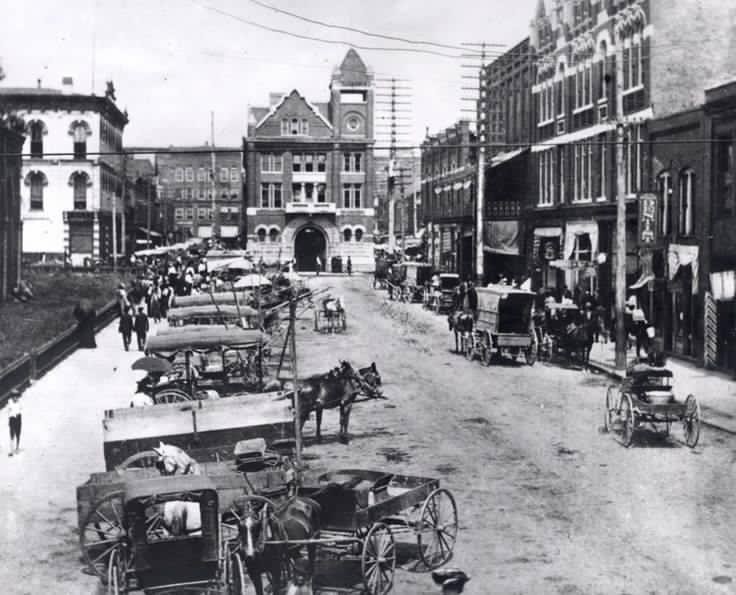Knoxville is full of memories of places that used to be. One that has long intrigued me is the Market House.
A market house was a fairly common institution in the 19th and 20th centuries. Before Big Ag dominated the picture, farmers – and their wives – needed somewhere to sell their produce, butter, livestock and meat, and a structure in the center of town or the business district seemed a logical spot. In the beginning, farmers also sold from their wagons, but eventually automobiles replaced them.
Knoxville’s first Market House was built in 1816 but didn’t last long, and then farmers sold their goods from their wagons parked on streets downtown near the riverfront. In 1854, another Market House was built on land donated to the city in the center of town. During the Civil War, the Union Army used it as a barracks and stored ammunition in it, and market business was conducted outside.

The second-floor of the Market House featured an auditorium.
I have vague memories of my paternal grandmother, Lela Fern Miles Pickle, telling me about going with her father, Samuel A. Miles, to his stall at the Market House when she was a girl. Grandma was born in 1901, so it would have been the “new” Market House built in 1897.
I have the impression that my great-grandfather sold vegetables, but I guess it could have been anything. I don’t know if young Fern helped him or just went with him to get out of their house in East Knoxville. She married my grandfather in 1919, and she was busy raising two kids of her own after that, so I doubt she continued accompanying her father to the market, if he was still selling there at that point.
Grandma’s descriptions of the Market House were a far cry from the experience I had shopping with my mother at the “modern” White Stores, IGA and Kroger in East Knoxville and Burlington. The Market House was a grand wooden structure that was a hubbub of activity and a feast for the eyes and nose, she said. The second floor of the building housed an auditorium where musical, social and political events were held.

Inside the Market House, circa 1940
I’ve learned through the years that the aromas Grandma remembered fondly weren’t cherished by everyone. One of my favorite Facebook rabbit holes is the group “Knoxville Tennessee History & Memories,” and I’ve soaked in a lot of info – and other people’s memories – from it. One of the main complaints from locals who remember being in the market was the fishy smell.
Tobacco use was acceptable inside and out, though spittoons weren’t always handy, and in fact the west side of the Market House was known as the Spittin’ Side.
Through the mid-1900s, as suburbs and grocery stores grew on each side of town, the Market House lost its appeal. Market Square itself became rundown, and the city government voted in late 1959 to tear down the Market House and renovate the area. Before any action could be taken, a fire destroyed part of the building, and shortly afterward the entire structure was razed.

At the Market House, circa 1959
The new Market Square Mall of the 1960s, a pedestrian space bordered by retail and bedecked with mushroom-like concrete coverings, became the modern symbol of downtown Knoxville – until it also deteriorated and finally was reborn into the bustling site of eateries, shops, performances and twice-weekly farmers markets that it is now.
Betsy Pickle is a freelance writer and editor who enjoys spotlighting downtown, South Knoxville and East Knoxville.


Trackbacks/Pingbacks